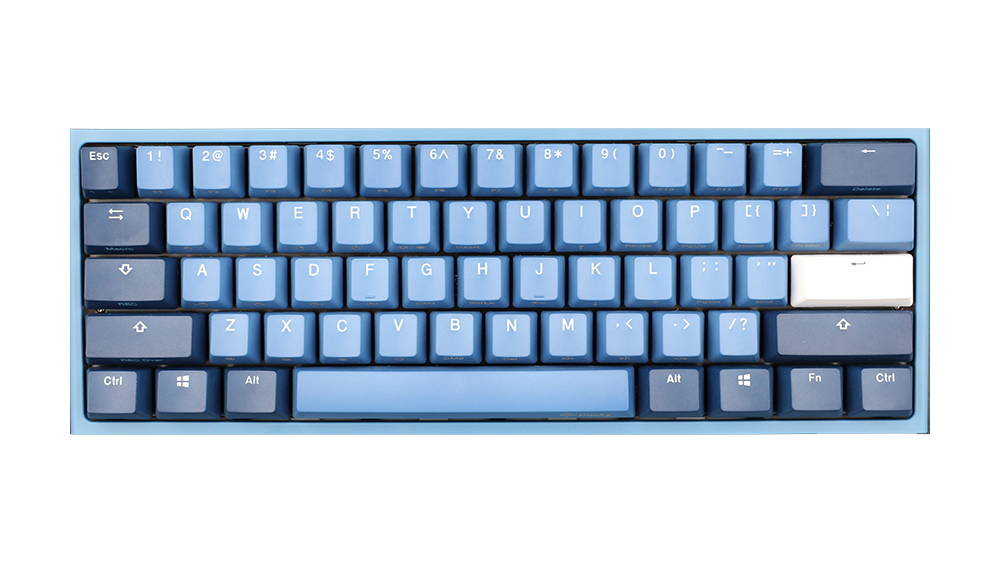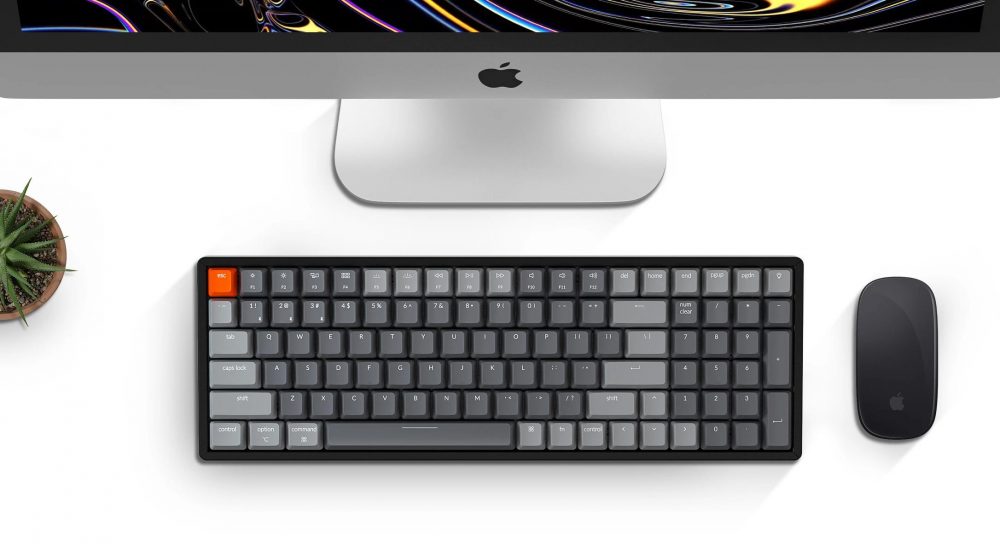The keyboard’s size and layout are two of the most critical factors that affect a person’s typing and gaming experience, and if you’re looking into mechanical keyboards, choosing the right size can be tricky. Given that challenge, we check out the different keyboard layouts and sizes to help you find the ideal one for yourself.
Full-Size
For the most part, people use 100% size keyboards. These keyboards are divided into four parts: a numeric keypad, arrow keys, the main key area, and the Function area. A full-sized keyboard has the benefit of meeting a wider range of workplace requirements. Data entry and computations are made more efficient with a Numpad. A full-sized keyboard has its drawback of taking up more space and being less portable. These keyboards normally have 104, 105, or even 108 keys depending on the regional layout – ANSI (US), ISO (EU), or JIS (JP). Another alternative.
These tend to become more expensive compared to smaller sizes since it requires a lot of extra switches and keycaps to complete the build. It isn’t common in enthusiast builds due to the cost.
1800 Compact
The 96% size keyboards are based mostly on 104 keyboards while reducing the keys that are rarely used. It still fits a wide range of workplace requirements, but it becomes more compact in the overall design. Another name for this type of keyboard is the 1800 Compact. This is quite a needle in the haystack but is known to be a great middle-ground between Tenkeyless (TKL) and full-sized keyboards.
Tenkeyless (TKL)
One of the more famous keyboard sizes is the 80% layout or better known as the Tenkeyless (TKL) keyboard thanks to the elimination of the numeric keypad. In order to dramatically condense the keyboard size, this layout completely removes the keypad that most gamers do not use. This layout is ideal for those who want additional desk space.
75% Size Keyboard
Another familiar layout is the 75% keyboard since most laptops come with the 84-key configuration. This layout reduces the number of function keys, but still retains the directional keys along with the F-keys. The 75% layout, on the other, shrinks the keyboard even further to boost mobility and increase deskspace.
65% Keyboard
The 65-key layout compresses the keys even further, resulting in a smaller keyboard. The F-function keys and numeric keypad were omitted, and those functionalities were replaced with combinations of other keys. The most often used function keys and directional arrow keys were kept. The smaller keyboard frees up more workspace and allows you to focus more on typing.
60% Size Keyboard
The 60% size keyboard is even more compact. Retaining only the number bar and alphabetical keys, the 60% size gives priority to the typing experience by eliminating the underutilized keys. The use of function keys or arrow keys is still present in some thanks to a combination of keys. This is ideal for individuals who ought to streamline their space and requirement typing for long periods of time. The 60% size keyboard is also very famous in the FPS scene as it conserves space, especially for vertical keyboard users.

Ducky One 2 Mini Good in Blue – 60% Keyboard
There are a bunch of other keyboard sizes and layouts, like the 40% size keyboard, split keyboards, and so on. These are normally seen in keyboard enthusiasts groups and we won’t be getting into those as these are not commonly seen and can be quite difficult to procure. They also do not come in our recommendations for the daily grind of gaming and work.
Tenkey (Number Pad)
Lastly, there’s the specially made number pad which has all of the keys you’d find on a normal full-size keyboard but can be kept away when not needed. It normally includes the Escape, Tab, Backspace buttons in addition to the already existing Numpad. These are great for those who want a minimalist setup but also need to crunch numbers. A great addition to 65% keyboards or even TKLs.
To wrap things up, we’ve covered almost all of the different sizes of keyboards from 108-keys down to the number pads. Choosing the perfect size for your keyboard depends on your needs and space. Take time to figure out what works best for you. If you have big desk space and want the full functionality of a regular keyboard, you can start at the top, then work your way down as you adjust your requirements. Remember, the keyboard should boost your functionality and not hinder it.
The post Mechanical keyboard sizes: Which one is for you? appeared first on YugaTech | Philippines Tech News & Reviews.
Source: Yugatech









No comments:
Post a Comment